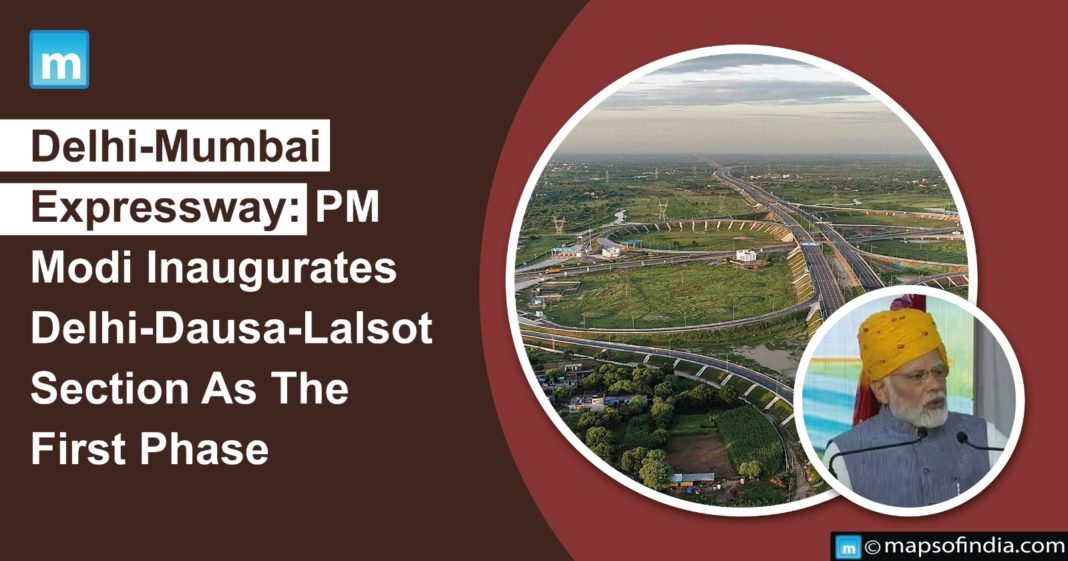The Delhi-Mumbai Expressway, also known as the Western Dedicated Freight Corridor, is an eagerly awaited infrastructural development. It is expected to transform India’s transportation system, economic growth, and trade relations between the two cities. The first section of the highway, 246 km Delhi – Dausa – Lalsot, which runs from Delhi to Mumbai, inaugurated on February 12. It is reportedly made with over Rs 12,150 crore.
“Studies show investment on infra brings in further investments,” said PM Modi as he inaugurated the first phase of the Delhi-Mumbai Expressway. He also added that people who travel to Delhi for work could return home in the evening after finishing their tasks. Furthermore, the prime minister also mentioned that rural “haats” were being created near the motorway so local craftspeople could sell their items.
“Prime Minister’s emphasis on the building of excellent road infrastructure as an engine of growth, development and connectivity in New India, is being realised by the construction of a number of ongoing world-class Expressways across the country. One such important project is Delhi Mumbai Expressway, whose first completed section, Delhi-Dausa-Lalsot, was dedicated to the nation by the Prime Minister,” the Prime Minister’s Office (PMO) said as per reports.
Features of the Delhi-Mumbai Expressway
The Delhi-Mumbai Expressway, a 1,450-kilometer long, six-lane motorway, links Delhi and Mumbai, two of India’s most populated cities. It is a component of the Western Dedicated Freight Corridor, a broader project designed to improve India’s transportation system and foster economic development in the nation. The motorway will reduce the roughly 12-hour road trip separating the two cities. With the new motorway, this trip should only take eight hours.
Smart Tolling System
The motorway’s innovative tolling system would let cars pass through toll gates without stopping. This will drastically reduce the time and effort needed to pay tolls.
Emergency Response System
Expressway’s emergency response system would help drivers to get fast help in the event of an accident or mechanical failure. Ambulances, fire trucks, and tow trucks will all form part of this system and be placed at key intersections along the motorway.
Benefits of the Delhi-Mumbai Expressway
The Delhi-Mumbai Expressway’s completion is anticipated to have several positive effects on the Indian economy, including:
Reduced Commute Time
The motorway would make it much easier and more convenient for passengers to commute between the two cities by significantly cutting down on travel time between the two cities.
Improved Trade and Transportation
A direct and effective route for transferring products between Delhi and Mumbai could enhance trade and commerce between these two cities.
Increased Employment Opportunities
The expressway’s development will increase employment opportunities, giving the Indian economy a much-needed boost. The expressway’s operation and maintenance will also create employment prospects for local people.
Many believe that launching the Delhi-Mumbai Expressway’s first section is an important turning point in India’s infrastructural growth. This motorway will bring many benefits to the nation, including transforming the nation’s transportation system, lower costs, increasing efficiency and safety, employment opportunities, and increasing economic growth. The Delhi-Mumbai Expressway’s prospects for success are bright citizens remain interested to know what lies ahead for this enormous project.






